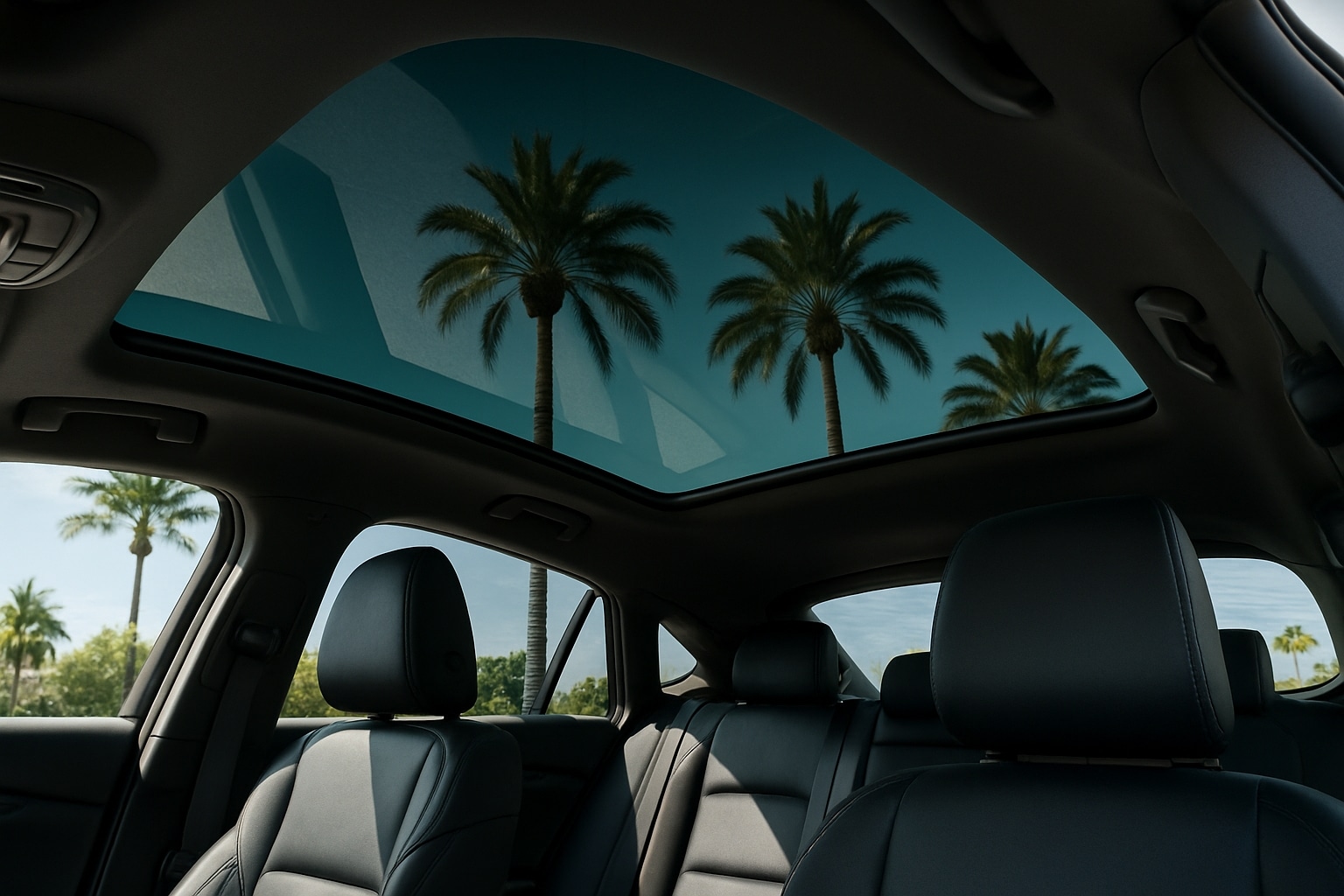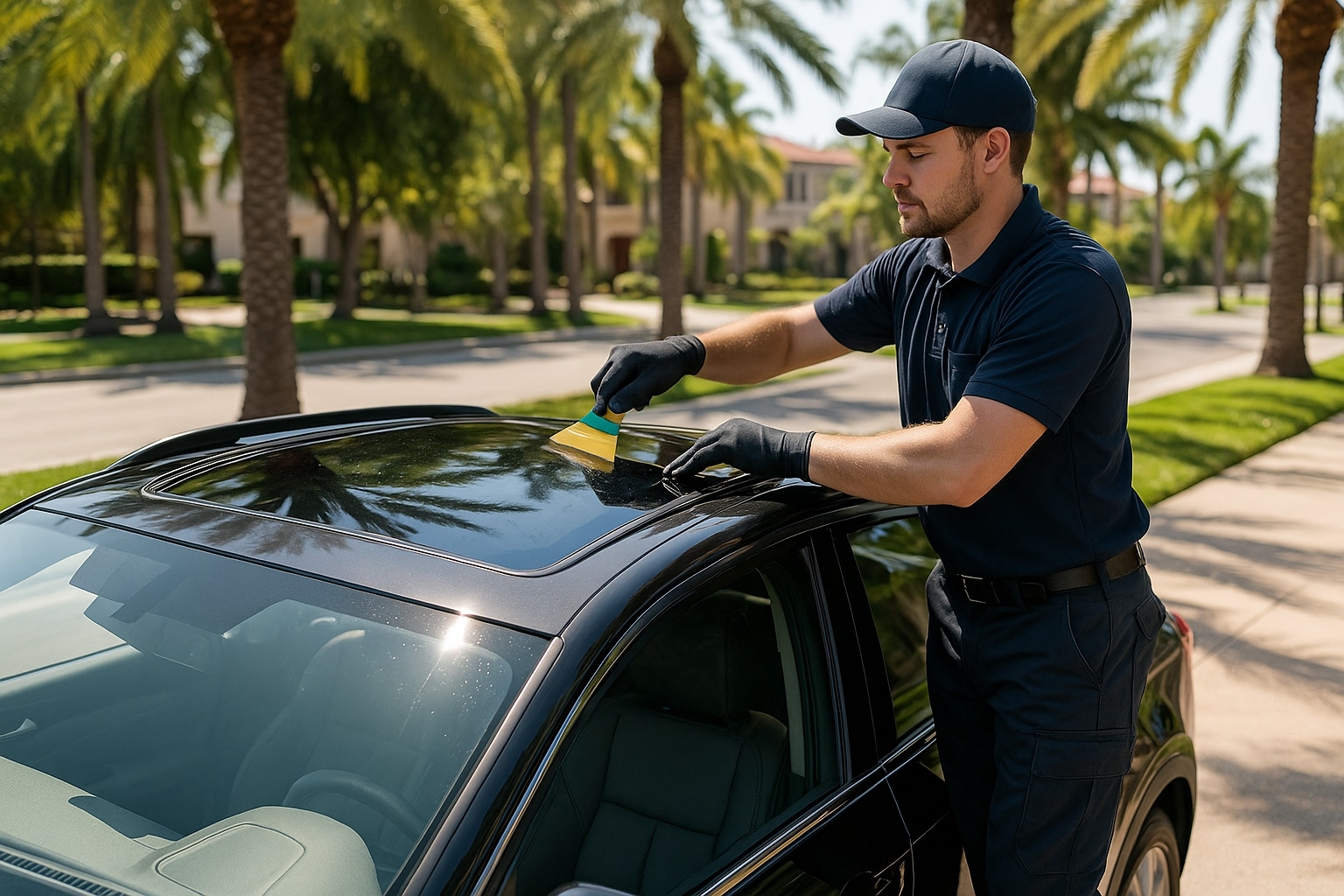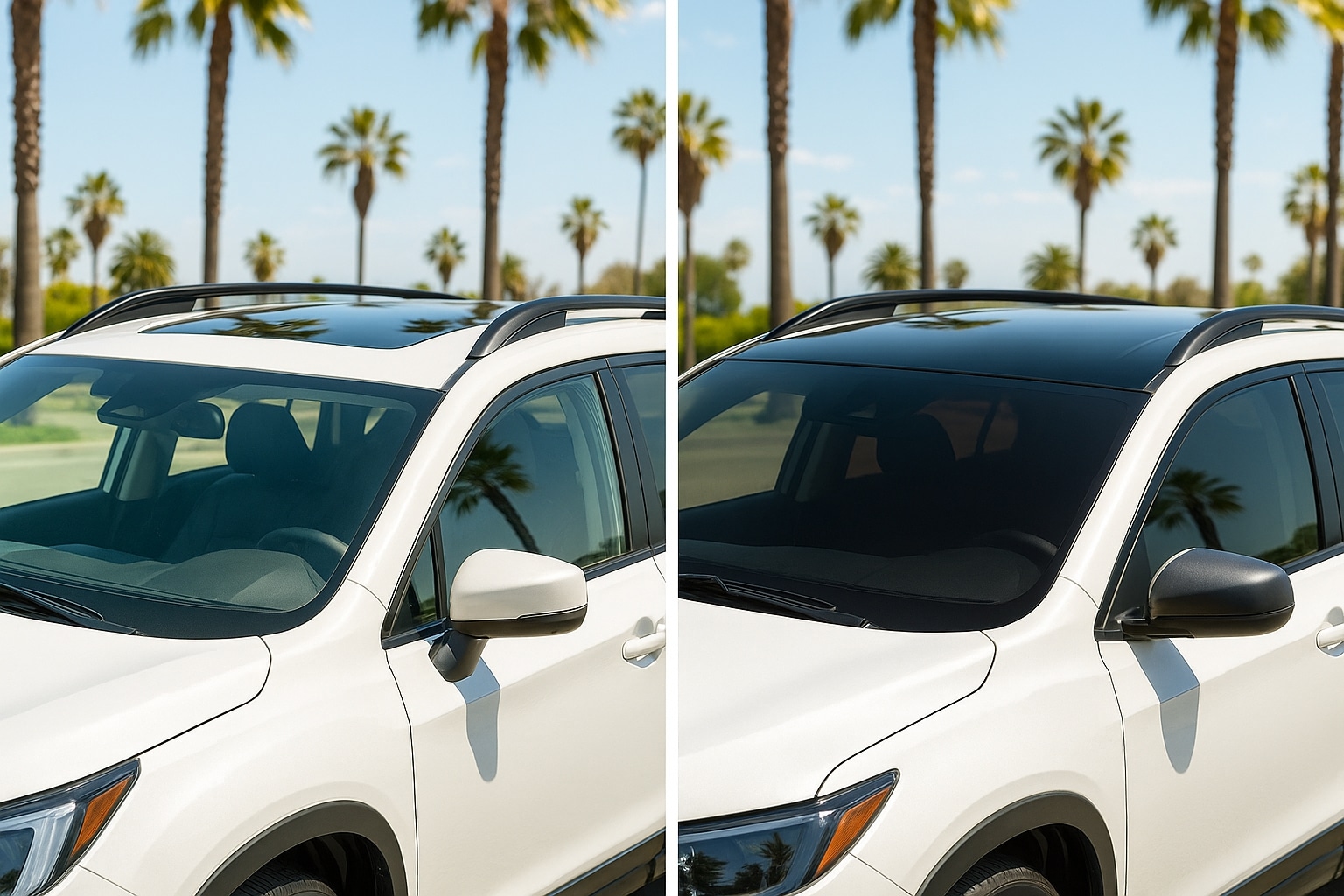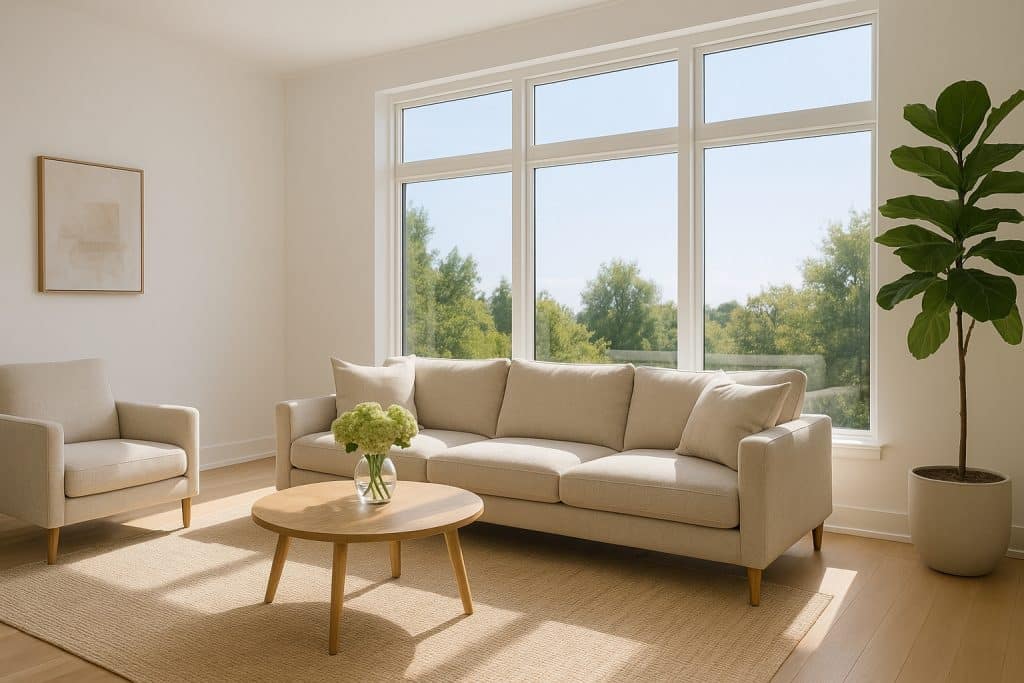
Why Tinting Your Car’s Glass Roof is a Hot Topic in SoCal
In San Diego and across Southern California, the sunny climate is both a blessing and a challenge for drivers. While a panoramic glass roof adds a touch of luxury, it also means:
- More sunlight and heat penetrating your cabin
- Increased UV exposure
- Potential glare that distracts or discomforts passengers
That’s where window tint for cars—specifically for sunroofs and moonroofs—enters the conversation.
Many car owners are surprised to learn that factory-tinted glass isn’t always enough. It’s often lightly tinted for aesthetics, not heat rejection or UV blocking.
Is It Safe to Tint a Sunroof or Moonroof?
Short answer: Yes—but with precautions.
What You Need to Know:
- Most glass roofs are tempered or laminated, which can generally handle film tinting.
- Ceramic window films are preferred because they reject heat without absorbing too much, which reduces the risk of cracking.
- Avoid metallic tints, which may trap heat and create pressure between double-glazed panels (especially in panoramic sunroofs).
- Professional installers assess the glass type and recommend film that’s safe and compliant with California law.
Pro Tip: Ask for a film with a high IR rejection rate but low total solar absorption.

Benefits of Tinting Your Sunroof or Moonroof
Adding window tint to your vehicle’s roof has some powerful perks, especially in the California heat:
✅ Heat Rejection
Blocks up to 70% of infrared radiation, keeping the cabin cooler and reducing A/C usage.
✅ UV Protection
Prevents 99% of UV rays from entering, helping protect your skin and reduce the risk of sun damage.
✅ Glare Reduction
Especially helpful for rear-seat passengers or drivers in taller vehicles like SUVs.
✅ Enhanced Comfort & Privacy
Darker or reflective films can offer daytime privacy and a more comfortable ride—even under harsh sunlight.
Challenges and Myths About Tinting Glass Roofs
Despite the benefits, there are a few things to keep in mind:
❌ Myth: “You can’t tint a sunroof at all.”
Reality: You can—if you use the right material and understand the glass composition.
❌ Myth: “Factory tint is enough.”
Reality: Factory tint only colors the glass. It often lacks performance coatings for heat or UV rejection.
❌ Challenge: Heat Cracking
Incorrectly applied tint—especially dark or metallic—can cause heat to build up and crack the glass. This is why ceramic and spectrally selective films are safest.

Legal & Warranty Considerations in California
California has clear regulations for automotive window tinting, but sunroofs and moonroofs aren’t typically governed the same way as side windows.
Key Points:
- There are no specific VLT (Visible Light Transmission) restrictions for sunroof tinting under California law.
- However, if your sunroof is designed to be opened, some automakers may advise against applying film.
- Check your vehicle warranty—some manufacturers void warranties if aftermarket tint is added to glass roofs.
Always ask your installer to review warranty implications and explain what’s safest for your specific car make and model.
DIY or Pro? Best Practices for Safe and Effective Tinting
Should You DIY?
Not recommended for roof tinting. Here’s why:
- Access is difficult (especially on large panoramic roofs)
- Correct film selection is critical
- Removing/replacing roof tint is tricky and costly
Why Go Professional in Southern California:
- Certified installers know how to match the right film to SoCal’s heat intensity
- You’ll get a warranty on both film and labor
- Safer application for panoramic or dual-pane glass roofs
Choose an installer experienced in ceramic automotive film, and look for brands like 3M Crystalline, XPEL Prime XR Plus, or LLumar CTX.
Final Thoughts
If you’re driving through San Diego or the sunny highways of Southern California, your panoramic glass roof can be both a highlight and a heat trap.
Adding window tint for cars—especially for sunroofs and moonroofs—is a smart way to:
- Improve comfort
- Reduce skin exposure to UV
- Lower cooling costs
- Increase your car’s luxury feel
Just be sure to consult with a trusted local expert, and choose ceramic or spectrally selective films for the best result.

